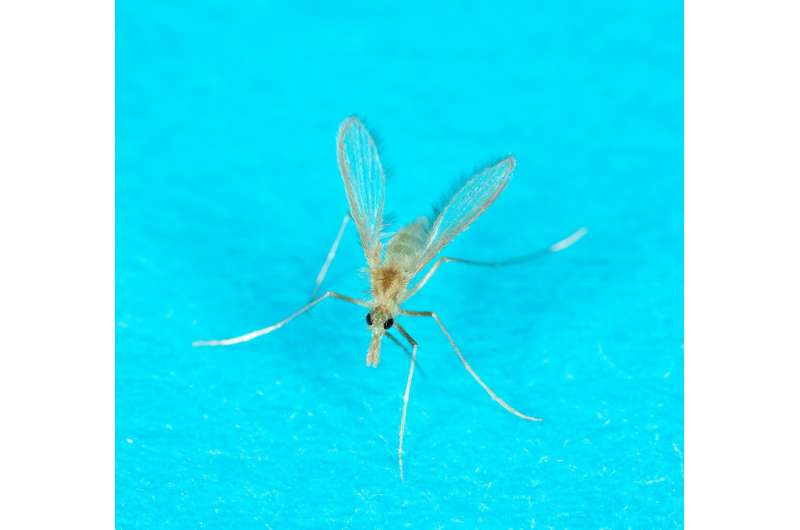The Phlebotomus papatasi sandfly. Credit: Stephen Ausmus, USDA, Flickr
The Phlebotomus papatasi sandfly is responsible for spreading Leishmania throughout the tropics and subtropics. How individuals in areas endemic for Leishmania infection react to sandfly saliva depends on their long-term exposure to the flies, researchers now report PLOS Neglected Tropical Diseases TK.
Leishmania is found in 90 countries, and more than a million infections occur worldwide each year. Previous work has shown that P. papatasi saliva helps Leishmania parasites infect someone, by interacting with the immune system. But studies have also suggested that repeated exposure to P. papatasi without Leishmania may confer some protection against the parasite, leading researchers to launch studies on immunizations modeled after P. papatasi saliva.
In the new work, Amel Meddeb-Garnaoui and Wafa Kammoun-Rebai, of the Institut Pasteur de Tunis, and colleagues studied the immune responses against P. papatasi salivary gland extract (SGE) of 790 people living in areas of Tunisia endemic for cutaneous leishmaniasis. Some areas were classified as old foci for the disease, while others were emerging foci. Each person was followed over the course of a year, before and after the typical season for Leishmania transmission. They were tested for leishmanial infection with a skin test and blood was collected for immune analyses.
The team found that less than 30% of people in all foci had anti-SGE proliferation, and that people more exposed to sandfly bites had higher anti-saliva IgG immune responses, higher IFN- γ levels, and their immune responses to the SGE were more likely to be Th2-type cellular responses. Anti-saliva IgG responses, they found, were a risk factor for the development of cutaneous leishmaniasis.
"Data presented in this study suggest that differences in sand fly exposure levels and in prevalence of infection are associated with different immune response profiles against P. papatasi saliva," the researchers say. "These data can contribute to a better understanding of the mechanisms that govern resistance or susceptibility to infection by Leishmania parasites upon transmission by the P. papatasi sandflies."
More information: Kammoun-Rebai W, Bahi-Jaber N, Naouar I, Toumi A, Ben Salah A, Louzir H, et al. (2017) Human cellular and humoral immune responses to Phlebotomus papatasisalivary gland antigens in endemic areas differing in prevalence of Leishmania major infection. PLoS Negl Trop Dis 11(10): e0005905. doi.org/10.1371/journal.pntd.0005905
Journal information: PLoS Neglected Tropical Diseases
Provided by Public Library of Science























